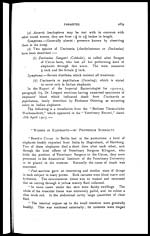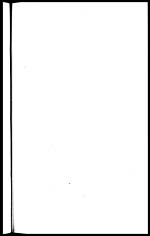Medicine - Veterinary > Veterinary diseases > Elephants and their diseases > Part IV - Non-infective diseases
(326) Page 270
Download files
Individual page:
Thumbnail gallery: Grid view | List view

270 A TREATISE ON ELEPHANTS.
with blood. With the exception of from 1 to 2 mm. in length
at the beginning and end, the mucous membrane of the small
intestine was very much swollen and covered with a greasy layer.
It was studded with punctiform hæmorrhages and large petechiæ,
and contained many flat depressions with reddened bases. In these
depressions and along the whole mucous membrane, forming thick
convolutions, numerous small round worms clung. These parasites
were undoubtedly the cause of death. By their presence they had
occasioned severe changes in the intestinal mucous membrane, and
established the state known as worm cachexia. It was also evident
from the state of the body that they had occasioned considerable
and continued loss of blood.
" The worm was examined by Professor Dr. Ostertag, who
pronounced it to be Uncinaria os papiliatum, a worm which only
occurs in Indian elephants.
"The remaining elephants were treated with santonin, which
effected the removal of a great quantity of the worms. The state of
health of the survivors has since been satisfactory. A prophylactic
taenicide in freshly imported young elephants has not hitherto been
noted."
Uncinaria are found in elephants in Burma. A parasite which
appears to belong to this species is not infrequently found in the
ducts of the liver where it sets up much irritation. On several
occasions post-mortem examination has demonstrated some of the
ducts to be choked with these parasites and local changes to have
occurred in the organ to such an extent as to warrant even death
being attributable to their presence. Observation, however, on the
effects of extensive infestation by round worms in elephants is
very desirable. Uncinaria, though insignificant in size, are often
by their numbers and blood-sucking propensities the cause of debility,
diarrhoea and loss of life. In making post-mortem examinations
therefore trouble should be taken to examine the mucous membrane
of the small intestines thoroughly for small hæmorrhages and to see
if there are any small parasites adhering thereto.
(c) Cobbold mentions that certain round worms are found in
small tumours in the coats of the stomach. If such tumours are met
with they should be incised, and if parasites are present they should
be carefully preserved and labelled.
Treatment for round worms.—A course of treatment of such
drugs as sulphate of iron, arsenic, santonin, and thymol in doses
of ½ to 2 drachms (see also Formulæ 47—53 and 39—46) is to be
recommended. At intervals during this treatment the bowel should
be opened by a mild purgative, and enemas {see Formulae 85 and
86) should also be at times administered.
Set display mode to: Large image | Zoom image | Transcription
Images and transcriptions on this page, including medium image downloads, may be used under the Creative Commons Attribution 4.0 International Licence unless otherwise stated. ![]()
| India Papers > Medicine - Veterinary > Veterinary diseases > Elephants and their diseases > Non-infective diseases > (326) Page 270 |
|---|
| Permanent URL | https://digital.nls.uk/75193038 |
|---|




